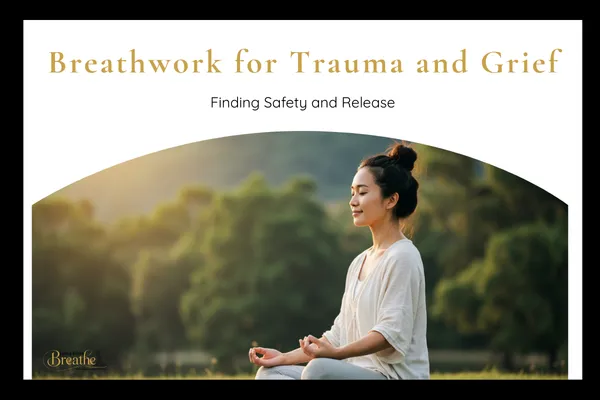HERE, CHANGE YOUR BREATH, CHANGE YOUR LIFE
With every inhale you invite calm. With every exhale you release what no longer serves you.
Lorem Ipsum is simply dummy text of the printing and typesetting industry. Lorem Ipsum has been the industry's standard.

Therapies Spectrum
Lorem Ipsum is simply dummy text of the printing and typesetting industry. Lorem Ipsum has been the industry's standard.

Long Experience
Lorem Ipsum is simply dummy text of the printing and typesetting industry. Lorem Ipsum has been the industry's standard.

Affordable Prices
Lorem Ipsum is simply dummy text of the printing and typesetting industry. Lorem Ipsum has been the industry's standard.
Meet Lorna Tobin
For over 25 years, Lorna Tobin has guided others through the healing power of breath. Her presence is gentle, steady, and rooted in resilience.

Begin Your Healing Journey
Begin with a simple breath analysis, a private session, or a package for deeper renewal. Group sessions offer the power of community.

BREATH ANALYSIS
$10 introduction

PRIVATE SESSIONS
90 minutes of breathwork healing

3-SESSION PACKAGE
Restore and renew

GROUP BREATHWORK
Community healing through shared breath
What is Transformational Breath®
Transformational BreathⓇ is a simple, profound process that uses a conscious breathing pattern to activate the most natural healing response.

Physical restoration through natural breath

Clarity and peace of mind

Awakening spiritual connection
In Their Words
What Clients Are Saying

“It’s amazing how something as simple as breath can change everything.”
“After just one session with Lorna, I felt a calm I hadn’t experienced in years. It was like my body finally remembered how to let go.”
— Emily R.


“I walked in tense and walked out free.”
“Breathwork with Lorna gave me the space to release old stress I didn’t even know I was carrying. I left feeling lighter, clearer, and more grounded.”
- Jason M.


“I never knew community healing could feel this safe and profound.”
“The group session was powerful. Breathing together created such a sense of connection and healing—I felt supported every step of the way.”
- Sarah T.

Inhale & Exhale Journal
Reflections, practices, and stories to support your breath journey.

Breathwork for Trauma and Grief: Finding Safety and Release
Trauma and grief leave deep impressions on the body, mind, and spirit. They may appear as constant tension, difficulty sleeping, or an underlying heaviness that feels impossible to release. Many people ask:
Can breathwork help me process grief?
Is there a safe way to release emotions I’ve held for years?
How does breathing help with trauma recovery?
The breath offers one of the most accessible and compassionate tools for healing. Breathwork does not erase what happened, but it creates a safe pathway for release, resilience, and renewal.

Trauma, Grief, and the Breath
When we experience trauma or deep loss, the body often remembers in ways the mind cannot. Breathing becomes shallow, tight, or uneven. This is not a weakness—it is the body’s natural way of bracing against pain.
But over time, unprocessed grief and trauma weigh heavily. Breathwork creates space for release. With each conscious inhale and exhale, the body learns to soften, emotions are allowed to surface safely, and healing begins.
According to the American Psychological Association, trauma affects not only the mind but also the nervous system and physical health. Breathwork provides a bridge, reconnecting the body and mind in a safe, supportive way.
Why Breathwork is Effective in Trauma Recovery
Safety
Breathwork sessions are guided with compassion and care. The focus is not to force release, but to create a container where you feel secure. Safety is the foundation of healing.
Embodiment
Trauma can cause disconnection from the body. Breathwork gently restores awareness and presence, helping you feel grounded in yourself again.
Emotional Release
Through guided breathing, tears, sighs, or gentle shaking may emerge. These are signs of the body letting go of what has been carried. The breath offers a natural pathway for this release.
Resilience
As emotions are released, what remains is strength. Many clients describe a sense of lightness, clarity, and renewed ability to move forward.
The Role of Compassionate Guidance
Trauma recovery requires more than technique—it requires presence. A skilled facilitator ensures the process unfolds gently.
Lorna’s work is rooted in her own journey through vulnerability and resilience. Clients often share that her steady presence allows them to go deeper than they could on their own, while still feeling safe and supported.
Breath Practices for Grief Support
Even small practices can bring comfort in moments of grief or overwhelm. Here are two gentle exercises:
Sigh Breathing
Take a deep breath in through the nose. Exhale with a natural sigh. Repeat several times. This simple practice signals safety to the nervous system and releases tension.
Heart-Centered Breathing
Place one hand over your heart. Inhale slowly, imagining breath moving into that space. Exhale gently, allowing the chest to soften. This practice can be especially supportive when emotions feel heavy.
Science and Healing
Research supports the connection between breathing and emotional healing. A study published in Frontiers in Psychology found that slow, conscious breathing reduces stress and supports emotional regulation, key elements in trauma recovery (NIH Research).
This is why breathwork is increasingly being recognized not only in wellness communities but also in therapeutic settings as a supportive tool for trauma and grief.
Stories of Healing
One client described how breathwork gave her permission to cry for the first time in years. She shared that the session felt like “a safe place to let go of what I had carried for too long.”
Another said that during grief, she often felt disconnected from her body. Breathwork gently brought her back, helping her feel both grounded and alive.
These stories highlight what research confirms: the breath is one of the most powerful, yet gentle, pathways for healing.
Questions People Ask About Breathwork for Trauma and Grief
Is breathwork safe if I have trauma?
Yes, when guided by a trained facilitator. The process is gentle and always paced by your comfort.Will I have to relive my trauma?
No. Breathwork does not require retelling or reliving. It focuses on creating space for the body to release stored tension.Can breathwork replace therapy?
No. Breathwork is a supportive tool, not a substitute for therapy. Many find it works well alongside counseling or other healing modalities.How soon will I feel a difference?
Many notice a sense of relief or release after the first session, with deeper resilience developing over time.
Healing from trauma and grief is not about forgetting.
It is about finding safety, allowing release, and rediscovering strength. Breathwork offers this path with compassion and power. Each breath reminds you that while pain is part of the story, so is resilience.
To explore breathwork for trauma and grief with Lorna Tobin, visit www.lornatobin.com.
Ready to Begin Your Journey
You do not have to carry it all alone. Your breath is waiting to guide you home.


